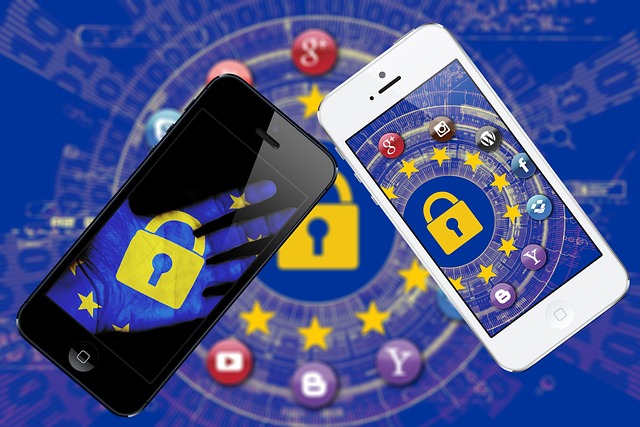In the digital age, the concept of personal space has expanded beyond physical boundaries. Every message, comment, and notification now carries the potential to intrude or reassure. The way we navigate these online interactions shapes the health of the communities we build. Understanding what “personal space online” means—and how to respect it—requires more than a polite tone; it demands an awareness of context, intent, and the invisible lines that separate one person’s privacy from another’s. This article explores the nuanced terrain of online etiquette, offering practical strategies that can help individuals, moderators, and platform designers foster environments where everyone feels safe, heard, and respected.
What Is Personal Space Online?
Personal space online refers to the digital boundaries individuals set to control the flow of information, interactions, and presence they share with others. Unlike a physical room where walls and distance define privacy, online space is fluid, often shaped by a mix of platform settings, social norms, and personal comfort levels. These boundaries manifest in several ways:
- Visibility settings: Who can view your profile, posts, or messages.
- Interaction permissions: Who can comment, tag, or send you direct messages.
- Content control: Your choice of what to share, how frequently, and with whom.
- Engagement limits: Your tolerance for notifications, group invitations, or algorithmic recommendations.
Respecting personal space online means acknowledging that each of these elements is personal, and that a one-size-fits-all approach rarely works.
The Rise of Hyper‑Connectivity and Its Impact on Community Health
Today’s platforms promise instant connection, but they also blur the line between public and private. The 24/7 newsfeed, real‑time messaging, and ubiquitous presence can lead to feelings of overwhelm or intrusion. When community members routinely cross each other’s comfort zones—whether by over‑tagging, excessive tagging, or unsolicited direct messages—the sense of trust erodes. Over time, this erosion manifests as reduced participation, heightened conflict, and a decline in overall community well‑being.
“A healthy online community is built on the invisible agreement that we will honor each other’s chosen boundaries. When that agreement is broken, the community feels the impact more deeply than any single argument or meme.” – Community Health Specialist
Key Signals That Someone Is Overstepping
Recognizing when a boundary has been crossed is often the first step toward preventing deeper conflicts. Look for these signals:
- Unwanted or repeated direct messages that feel intrusive.
- Publicly tagging someone in a post without prior consent.
- Sharing personal information about someone without their permission.
- Inviting someone to a group or event when they have previously declined similar invitations.
- Continuing to engage after a clear “no” or a respectful request to stop.
When any of these occur, it’s wise to pause and consider the other person’s perspective before proceeding.
Practical Ways to Honor Personal Space Online
Below are actionable strategies that both individuals and community managers can adopt to create a respectful digital environment.
- Check and Re‑check Permissions: Before tagging, messaging, or sharing, confirm the recipient’s settings. If the platform offers a “Do Not Disturb” mode or similar, honor it.
- Use Direct Messages Judiciously: Treat private conversations with the same privacy standards you would expect offline. Avoid forwarding or resharing content that was sent privately.
- Mindful Content Timing: If you know a community member has a busy schedule, consider the timing of your posts. Late‑night notifications can feel intrusive.
- Clear and Respectful Requests: If someone asks you to stop tagging or to be removed from a group, respond promptly and without debate.
- Transparent Moderation: Community managers should make privacy settings and moderation policies visible and understandable, so members know exactly how their space is protected.
Designing Platforms That Protect Personal Space
While individual behavior is critical, platform architecture can either facilitate or hinder respectful interactions. Here are design principles that promote healthy personal boundaries.
- Granular Privacy Controls: Allow users to fine‑tune who sees each post, comment, or profile detail.
- Clear Notification Settings: Provide users with an intuitive way to manage who can ping them and under what circumstances.
- Opt‑In Group Features: Require explicit consent for adding members to groups, channels, or events.
- Safe-Delete Options: Ensure that content removal is straightforward and irreversible, preventing accidental or unwanted exposure.
- Transparent Data Usage Policies: Let users see how their data is shared or shown to others, fostering trust.
Case Study: Community Moderation That Prioritizes Space
Consider an online gaming community that introduced a “Quiet Hours” feature, allowing members to block all notifications between 10 p.m. and 6 a.m. The result was a measurable drop in conflict reports and an increase in member satisfaction scores. Members appreciated that the platform recognized personal boundaries and respected individual rhythms. The moderation team, in turn, spent less time managing complaints and more time curating quality content.
Steps to Implement Quiet Hours in Your Community
Implementing a similar feature involves both technical and cultural shifts.
- Survey Your Members: Gauge interest and preferred time slots.
- Develop the Technical Framework: Work with developers to create a toggle that filters notifications during the chosen window.
- Communicate Clearly: Publish guidelines explaining how Quiet Hours work and how to activate them.
- Train Moderators: Ensure they understand the policy and can assist members with setup.
- Monitor and Iterate: Collect feedback after launch and adjust as needed.
Common Misconceptions About Personal Space Online
Debunking myths can help community members make informed choices about how they engage.
- Myth: “If I’m online, I’m always open to interaction.” Reality: People use online presence to signal availability, but they may still prefer certain boundaries.
- Myth: “Privacy settings are just optional.” Reality: They are foundational to respectful interactions; neglecting them can inadvertently expose personal space.
- Myth: “Blocking is rude.” Reality: Blocking is a healthy tool for managing boundaries and can prevent harassment.
Why These Misconceptions Matter
When people assume others are always open, they may send unsolicited messages or tag content that feels invasive. Ignoring privacy settings can expose sensitive data, creating vulnerability. Viewing blocking as a negative act can discourage individuals from protecting themselves. Addressing these misconceptions through education fosters a community where respectful boundaries become the norm rather than the exception.
Building a Culture of Mutual Respect
Ultimately, honoring personal space online is a shared responsibility. Communities thrive when each member feels seen, heard, and protected. Cultivating this culture involves intentional dialogue, clear policies, and consistent reinforcement.
- Regular Reminders: Post periodic tips on respecting boundaries.
- Feedback Loops: Encourage members to report boundary breaches anonymously.
- Role Models: Highlight community leaders who demonstrate respectful behavior.
- Adaptive Policies: Update guidelines in response to new technologies or emerging social norms.
Conclusion: A Collective Commitment to Healthy Spaces
Personal space online is not a static concept; it evolves with technology, culture, and individual needs. By consciously applying respectful practices—both at the individual level and within platform design—communities can safeguard the emotional and psychological well‑being of all participants. When we honor each other’s digital boundaries, we pave the way for more authentic interactions, deeper trust, and ultimately, a healthier, more vibrant online community.




